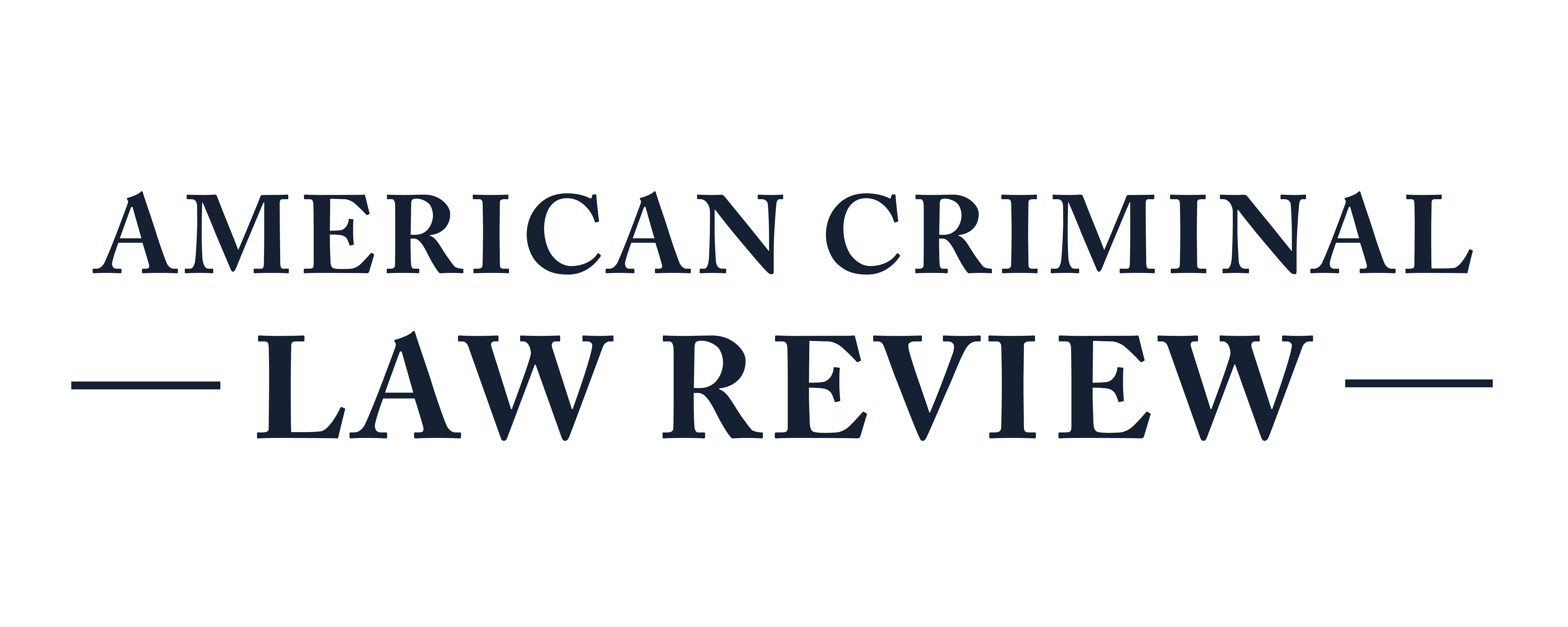Compassionate Release as Compassionate Decarceration: State Influence on Federal Compassionate Release and the Unfinished Federal Reform
In July 2021, as the COVID-19 Delta variant contributed to the “rapid and alarming rise in the COVID-19 case and hospitalization rates around the country,” Wylema Wilson hand-wrote a letter to the United States District Court for the Western District of Oklahoma, noting the COVID-19 deaths in her prison. As a 66-year-old inmate having served some years for drug trafficking, she “hoped for a second chance at life, a life the way it should be[,] clean and sober.” The court denied her motion for compassionate release, concluding that a sentence reduction “would not reflect the seriousness of defendant’s offense.” Grim as that result might be, grimmer is the systematically lagging trajectory of federal compassionate release reform. Until very recently, Wylema’s letter to seek early release would not even have been possible. While the history of court-ordered compassionate release in federal law dates back to the Sentencing Reform Act of 1984 (SRA), it was not until the First Step Act of 2018 (FSA) that prisoners were allowed to petition for their own compassionate release under the new phrase added to 18 U.S.C. § 3582(c) (“upon motion of the defendant”). Before the FSA’s passage on December 21, 2018,7 federal courts could only reduce the term of imprisonment “upon motion of the Director of the Bureau of Prisons,” who has often been reluctant and untimely in filing the motions. It took six bills amending 18 U.S.C. § 3582 for the federal criminal justice system to arrive at the current Prisoner-initiated & Court-ordered (PICO) Compassionate Release system. But the PICO compassionate release statute—which one could argue is the bare minimum of a genuine compassionate release system, where prisoners can have their voices heard in a public proceeding—was not first seen in the federal criminal justice system, despite strong scholarly attention to federal compassionate release. Historical records suggests that by 1994 at the latest, New Jersey already had a PICO compassionate release system, first among the states. State compassionate release practices arguably influenced federal compassionate release reform in part through the American Law Institute’s Model Penal Code: Sentencing, the final draft of which was approved in May 2017, a year before the introduction and passage of the FSA. As activists who urged its passage wrote, the FSA was a “modest but necessary” step; the pandemic and the threat it posed to the incarcerated population ought to prompt reflections on what the next steps should be. This Essay is intended to serve as both a brief historical review of state influence on federal compassionate release, and as a reflection on the unfinished compassionate release reform in terms of DOJ’s execution. Part I briefly surveys the trajectory of 18 U.S.C. § 3582(c) from the SRA to the PICO compassionate release provision in the FSA, and its application in the pandemic. Part II supplements the compassionate release literature by exploring the history of PICO compassionate release in state law as a backdrop of the long-awaited federal reform allowing prisoners to petition for their own release, and it proposes that state practices, especially that of New Jersey, might have influenced the introduction and passage of FSA in part through the Model Penal Code. Part III suggests that the arc of compassionate release reform in federal law is nevertheless unfinished, with the Department of Justice’s (DOJ) objection practices being part of the necessary change. Using data and cases from the District of Columbia, whose PICO compassionate release statute is modeled after federal law and clearly intended as a response to the pandemic, this Essay proposes that the DOJ’s perspective and practices must change to adapt to the essential purpose of compassionate release: addressing mass incarceration in America with compassion.
Subscribe to ACLR
